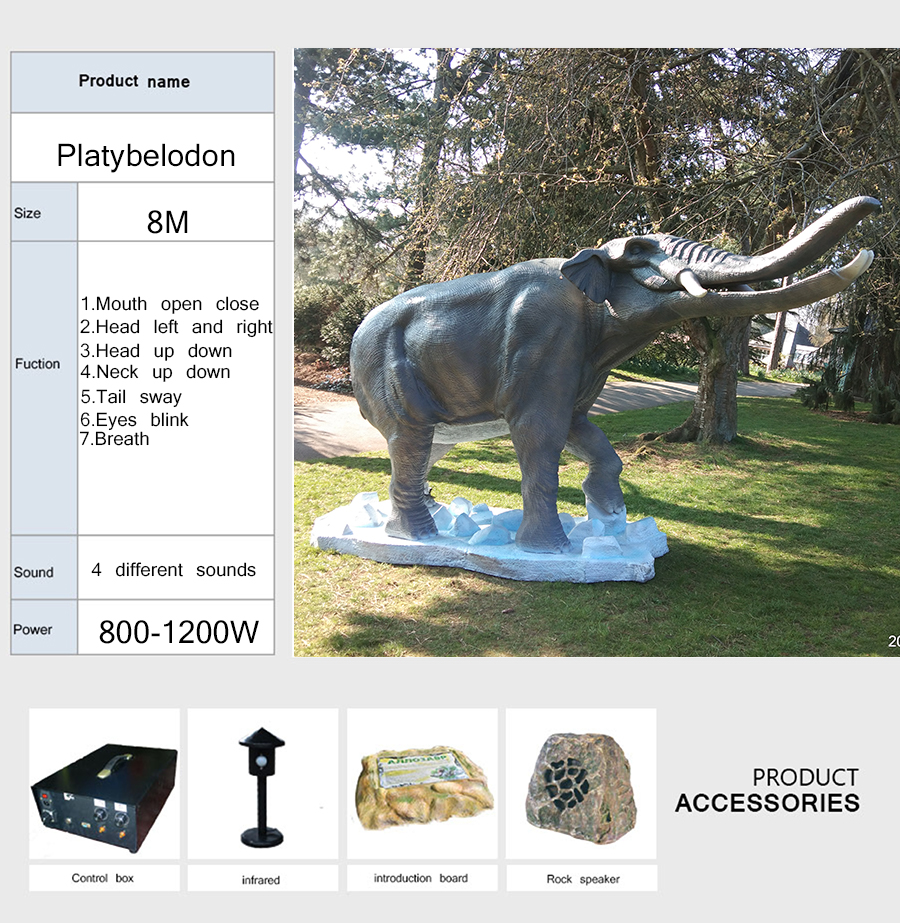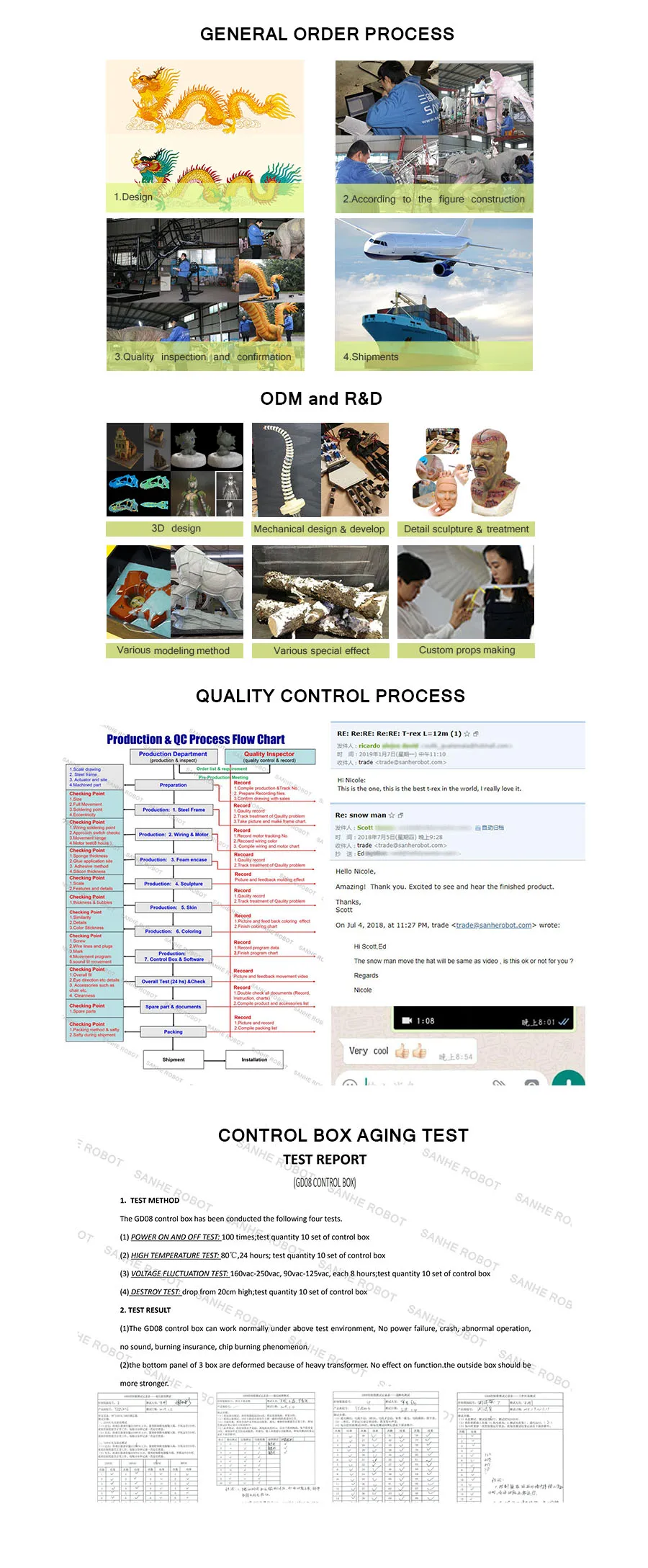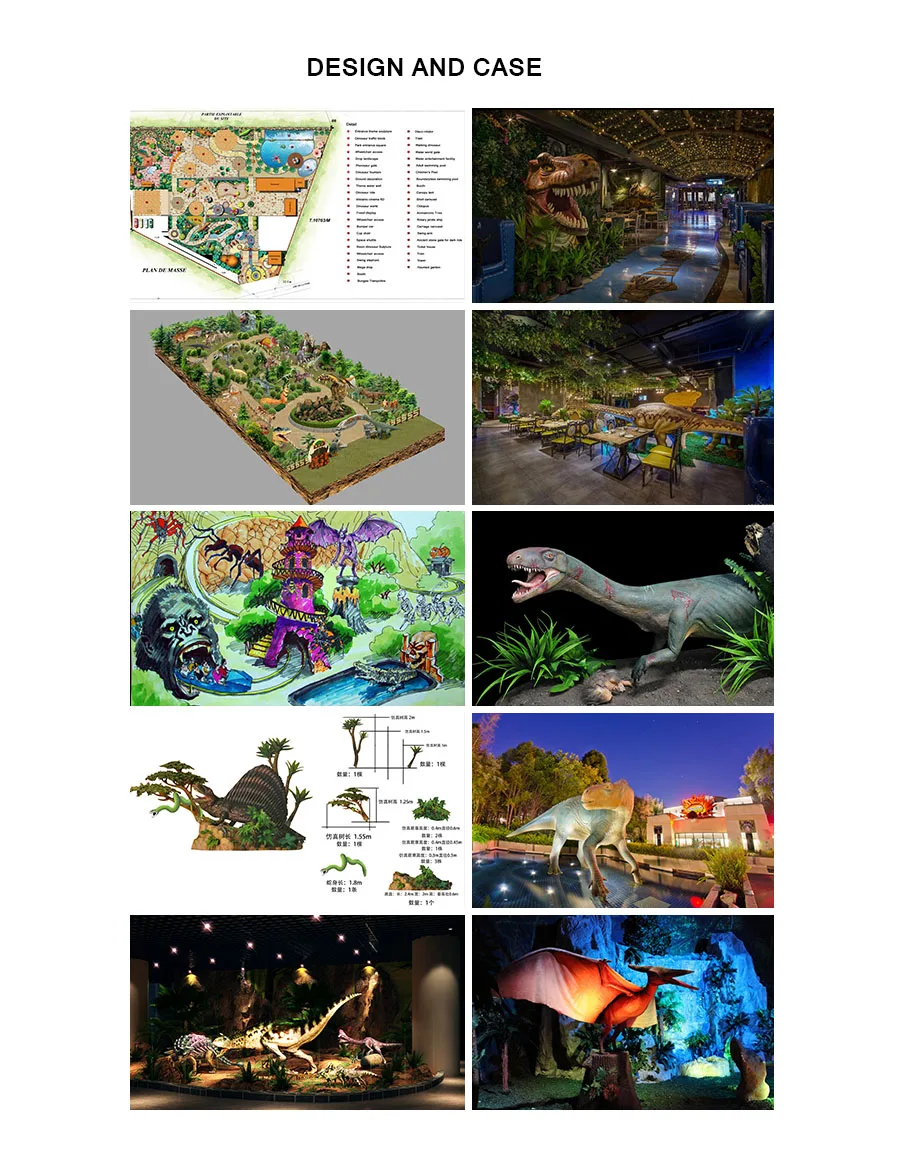Animatronic Prehistoric animals in theme parks 

MORE INFORMATION
| Input | AC 110/220V ,50-60HZ |
| Plug | Euro plug / British Standard / SAA / C-UL / or depends on request |
| Control mode | Automatic / Infrared / remote / coin / Button / Voice / Touch / Temperature / shooting etc. |
| Waterproofing grade | IP66 |
| Working condition | Sunshine, rain, seaside, 0~50℃(32℉~82℉) |
| Optional function | Sound can be increased to 128 kinds Smoke,/ water. / bleed / smell / change color / change lights / LED screen etc interactive(Location tracking) / conversine(currently only Chinese) |
AFTER-SALE SERVICE
| Service | Need be cut for shipping,fwill provide a detailed installation manual. |
| Warranty | We provide 2 years warranty for all of our antrimatronic models, the warranty pieriod starts from freight arrives at destination port. Our warranty covers motor, reducer, control box, etc. |






 prehistorical animal,simualtion animal,high quality life size animal
realistic animals amusement park animals realistic animals robotic animal statue handmade animal statue playground animal statue animatronic animal lifelike animal life size animatronic animal statues animal statues for sale animal playground equipment playground equipment exhibition display zoo exhibition animal model lifelike animal model animatronics animal model african animal sculptures prehistoric animal
Platybelodon ("flat-spear tusk") was a genus of large herbivorous mammals related to the elephant (order Proboscidea). It lived during the middle Miocene Epoch in Africa, Asia and the Caucasus.
Platybelodon was previously believed to have fed in the swampy areas of grassy savannas, using its teeth to shovel up aquatic and semi-aquatic vegetation. However, wear patterns on the teeth suggest that it used its lower tusks to strip bark from trees, and may have used the sharp incisors that formed the edge of the "shovel" more like a modern-day scythe, grasping branches with its trunk and rubbing them against the lower teeth to cut it from a tree.Adult animals in particular might have eaten coarser vegetation more frequently than juveniles.
Males (bulls) leave their family groups when they reach puberty and may live alone or with other males. Adult bulls mostly interact with family groups when looking for a mate. They enter a state of increased testosterone and aggression known as musth, which helps them gain dominance over other males as well as reproductive success. Calves are the centre of attention in their family groups and rely on their mothers for as long as three years. Elephants can live up to 70 years in the wild. They communicate by touch, sight, smell, and sound; elephants use infrasound, and seismic communication over long distances. Elephant intelligence has been compared with that of primates and cetaceans. They appear to have self-awareness, and appear to show empathy for dying and dead family members.
prehistorical animal,simualtion animal,high quality life size animal
realistic animals amusement park animals realistic animals robotic animal statue handmade animal statue playground animal statue animatronic animal lifelike animal life size animatronic animal statues animal statues for sale animal playground equipment playground equipment exhibition display zoo exhibition animal model lifelike animal model animatronics animal model african animal sculptures prehistoric animal
Platybelodon ("flat-spear tusk") was a genus of large herbivorous mammals related to the elephant (order Proboscidea). It lived during the middle Miocene Epoch in Africa, Asia and the Caucasus.
Platybelodon was previously believed to have fed in the swampy areas of grassy savannas, using its teeth to shovel up aquatic and semi-aquatic vegetation. However, wear patterns on the teeth suggest that it used its lower tusks to strip bark from trees, and may have used the sharp incisors that formed the edge of the "shovel" more like a modern-day scythe, grasping branches with its trunk and rubbing them against the lower teeth to cut it from a tree.Adult animals in particular might have eaten coarser vegetation more frequently than juveniles.
Males (bulls) leave their family groups when they reach puberty and may live alone or with other males. Adult bulls mostly interact with family groups when looking for a mate. They enter a state of increased testosterone and aggression known as musth, which helps them gain dominance over other males as well as reproductive success. Calves are the centre of attention in their family groups and rely on their mothers for as long as three years. Elephants can live up to 70 years in the wild. They communicate by touch, sight, smell, and sound; elephants use infrasound, and seismic communication over long distances. Elephant intelligence has been compared with that of primates and cetaceans. They appear to have self-awareness, and appear to show empathy for dying and dead family members.

+86-813-2104677

info@sanherobot.com

+86-13990010824

No.13 Huixin Road, Yantan Town, Yantan District, Zigong City, Sichuan Province, China